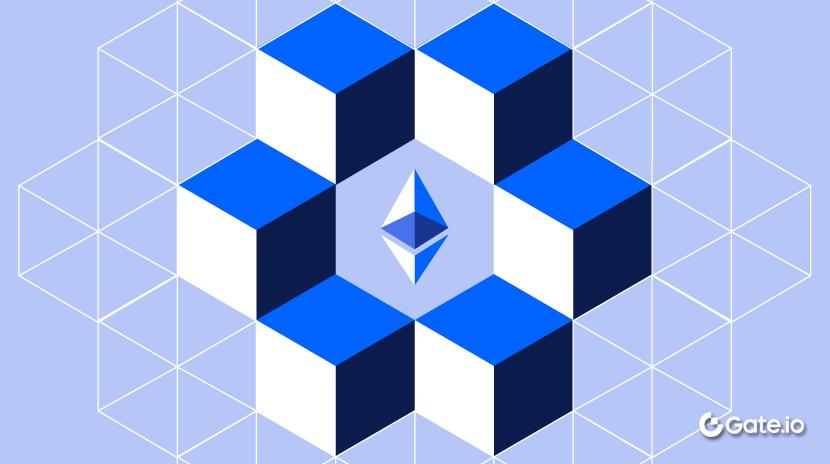Дослідження Gate: Торгова політика Трампа спричиняє спад глобального ринку; Ethereum знову займає перше місце за обсягом у березні на ринку DEX
Абстрактний
- BTC торгувався в межах консолідаційного діапазону на цьому тижні, тоді як ETH показав трохи слабший тренд в межах схожого діапазону.
- Трамп оголосив про комплексну тарифну політику, вводячи ступеневі мита на 50 країн, з підвищенням мит на автомобілі до 25%.
- Комітет палати Аризони схвалив законопроєкт, що дозволяє штату утримувати резерви в Bitcoin.
- Fidelity запустила пенсійну програму, яка підтримує прямі інвестиції в криптовалюти.
- Ethereum повернувся на верхню позицію в торгівлі DEX, тоді як інтерес до Solana зменшився.
- Стейблкоїни швидко набирають популярність на ринках зростаючих країн, і Індія проводить цю атаку.
Аналіз ринку
Огляд та висновки
- BTC — BTC торгувався в межах консолідаційного діапазону на цьому тижні і наразі коштує $83,827. Підтримка знаходиться на рівні $81,300, тоді як опір складає $88,700. Чіткий вихід вище опору може призвести до подальшого руху в напрямку опорної зони $88,000–$89,000. Загальний торговий обсяг був помірним, з помітним стрибком під час недавнього стрімкого падіння, але тривалого тренду обсягу не виникло. Бики та ведмеді залишаються в обережній конкуренцією.

- Етер — ETH показав слабший бічний тренд на цьому тижні, наразі торгується на рівні 1 827 доларів. Підтримка знаходиться на рівні 1 770 доларів, а опір знаходиться між 1 860 та 1 880 доларів. Виходи з-під спускної лінії тенденції можуть відкрити шлях до зони опору 1 920–1 950 доларів. Оглядовий обсяг на ринку був загалом стабільним, але помітне зростання супроводило останню падучу свічку, що свідчить про невелику спробу биків, яка швидко ретроцедувала, відображаючи продовжену обережність на ринку.[2]

- Альткоіни — Протягом останніх 7 днів ціни на альткоїни загалом були повільними, з приростами, які відстали від результатів минулого тижня. Сектори Зберігання, Виготовлено в Китаї та BTCfi були відносно стійкими, з відповідними змінами ринкової капіталізації за 7 днів +3.8%, -1.4% та -3.2%.[3]
- Фьючерсы — На 8:00 ранку (UTC+8) 3 квітня 2025 року відкритий інтерес на ринку опціонів BTC становив 24,93 мільярда доларів, що суттєво менше, ніж 36,92 мільярда доларів на минулому тижні. Номінальна вартість опціонів, які закінчуються 4 квітня, зросла до 2,764 мільярда доларів.[4]
- Макродані — У вечірній час 2 квітня США повідомили дані про зайнятість від ADP за березень у розмірі 155 000, перевищуючи очікування у розмірі 115 000, що свідчить про продовження стійкості на ринку праці. Після публікації всі три основні індекси американських фондових ринків піднялися, а крипторинок пішов по сліду.
- Стейблкоїни — Загальна ринкова капіталізація стейблкоїнів зросла на 0,19% на цьому тижні до 234,8 мільярдів доларів, що відображає невеликий чистий витік позаринкових коштів.[6]
- Вартість газу — Протягом останніх 7 днів середній газовий збір Ethereum збільшився до 0.70 Гвей, а активність мережі показала невелике зростання.[7]
Трендові концепції
На цьому тижні BTC торгувався в діапазоні від $81,500 до $87,000, тоді як більшість секторів альткоїнів зазнали втрат. За даними CoinGecko, сектори Storage, Made in China та BTCfi були відносно стійкими змінами загальної ринкової капіталізації за 7 днів +3,8%, -1,4% та -3,2% відповідно. [8]
ЗберіганняЦей сектор складається з децентралізованих мереж зберігання даних, побудованих на технології блокчейн, призначених для надання безпечних, ефективних та недорогих рішень зберігання. Ці мережі дозволяють користувачам внести невикористане простір на жорсткому диску, утворюючи глобальний розподілений ринок зберігання. Порівняно з традиційним централізованим хмарним зберіганням, децентралізована модель зменшує одиночні точки відмови та підвищує конфіденційність та безпеку даних.
Капіталізація ринку сектору зберігання зросла на 3,8% на цьому тижні і становить близько 4,5 мільярдів доларів, з обсягом торгів на рівні 604 мільйонів доларів протягом 24 годин. У межах сектору XAND виріс на 14,2% за останні 7 днів. [9]
Виготовлено в Китаї— Цей сектор висвітлює блокчейн-проекти, розроблені і експлуатовані китайськими командами. Ці проекти поєднують місцеві потреби ринку з передовою технологією, щоб пропонувати безпечні та ефективні цифрові активи, використовуючи як інновації, так і регуляторні переваги. Сектор охоплює такі галузі, як цифрові платежі, відстеження ланцюга постачання та міжнародні фінанси — демонструючи прогрес Китаю в інноваціях блокчейну, підтримуючи цифрову трансформацію у традиційних галузях.
Сектор "Made in China" побачив зниження ринкової капіталізації на 1,4% на цьому тижні, до приблизно $28,8 мільярда, з обсягом торгів на $1,3 мільярда за 24 години. У межах цього сектору TRON зросла на 2,2% за останні 7 днів. [10]
BTCFiСектор BTCFi має на меті розвинути Bitcoin з простого засобу зберігання в продуктивну фінансову платформу. Шляхом інтеграції технологій Bitcoin-native та Layer 2, BTCFi дозволяє децентралізоване кредитування, стейкінг та видобуток ліквідності, пропонуючи користувачам прозоре, ефективне та безпосередньо посередницьке фінансове середовище, яке використовує неперевершену безпеку та глобальну ліквідність Bitcoin.
Капіталізація сектору BTCFi впала на 3,2% на цьому тижні до приблизно 1,67 мільярда доларів, з обсягом торгів на 24 години у розмірі 380 мільйонів доларів. У межах сектору Pendle зросла на 1,5% за останні 7 днів. [11]
Топ виконавці
Згідно з даними CoinGecko, найкраще працюють наступні токени за останні 7 днів: [12]

EOS (EOS) — Приблизно на 40.3% за 7 днів, з обіговим ринковим капіталізацією у розмірі $1.234 мільярда.
EOS - децентралізована блокчейн-платформа, розроблена компанією Block.one, спроектована для підтримки децентралізованих додатків високої продуктивності (DApps). Вона використовує механізм консенсусу з делегованим підтвердженням ставок (DPoS), щоб підвищити швидкість та масштабованість транзакцій. Основний токен EOS використовується для оплати мережевих ресурсів, таких як обчислення, зберігання та пропускна здатність, і також надає власникам права управління - дозволяючи їм голосувати за виробників блоків (супервузли).[13]
Останній стрибок цін був спричинений новиною про те, що Vaulta партнерить з exSat для злиття мереж Bitcoin та EOS, розширюючи потенціал EOS в багатоланцюговому екосистемі. Інтеграцію вважають значним технічним проривом і вона викликала великий інтерес як спільноти, так і ринку.
TON (The Open Network) — Приблизно на 4.0% за 7 днів, з обіговим ринковим капіталізацією в розмірі $9.4 мільярда.
Open Network (TON) — це децентралізована блокчейн-платформа, спочатку розроблена командою Telegram. Він спрямований на забезпечення високопродуктивної, масштабованої інфраструктури для підтримки децентралізованих додатків (dApps). TON призначений для обробки мільйонів транзакцій в секунду, задовольняючи вимоги великомасштабних додатків. Його основні компоненти — TON Blockchain, TON DNS, TON Storage, TON Sites і TON Proxy — утворюють комплексну екосистему. [14]
RedotPay оголосив про інтеграцію з блокчейном TON, що дозволяє користувачам здійснювати глобальні платежі USDT через більше ніж 130 мільйонів торговців, що значно збільшує реальну корисність та попит на TON. Тим часом, MyTonWallet випустив версію 3.5, поліпшуючи стрічку активності та додавши функцію приховання балансу, покращуючи взаємодію користувача та підтримуючи зростання екосистеми TON. Крім того, офіційний гаманець Telegram запустив новий розділ "Торгівля" та оголосив нульові торгові комісії для всіх токенів екосистеми TON до 14 квітня, підвищуючи ринкову активність та ліквідність.
TRX (TRON) — Приблизно на 1,9% за 7 днів, з обіговою ринковою капіталізацією у розмірі 22,39 мільярда доларів.
TRON (TRX) - це блокчейн-платформа, спрямована на побудову глобальної цифрової системи контенту та розваг. Вона дозволяє користувачам вільно публікувати, зберігати та володіти даними та взаємодіяти через децентралізовані додатки (dApps). Внутрішній токен, TRX, використовується для оплати комісій за транзакції, винагороди творців контенту та участі в управлінні мережею.[15]
Останні прирости TRX були підтримані сильною активністю на ланцюжку та зростанням обсягу операцій зі стабільною монетою. У минулому місяці мережа TRON обробила до $560 мільярдів у переказах—головним чином з платежів стабільною монетою від однодумців—підкреслюючи ефективність і стабільність мережі. У той самий час ринкова капіталізація стабільних монет на TRON досягла нового історичного максимуму, що відображає зростаючу довіру ринку. При зростанні використання мережі довіра інвесторів зміцнюється, підтримуючи зростання ціни TRX.
Щотижневі прожектори
Огляд гарячої теми
Трамп оголосив про комплексну тарифну політику: тарифи поетапно на 50 країн, мита на автомобілі підвищено до 25%
У своєму виступі, який він виголосив сьогодні вранці, Трамп офіційно представив свою комплексну тарифну політику, сигналізуючи про подальше наростання напруги в глобальній торгівлі—знову це стосується відносин між США та Китаєм. Згідно з новою структурою, 50 країн і регіонів стикаються з різними рівнями мит: дружні країни підпадають під 10% взаємне мито, тоді як вищі ставки застосовуються до нейтральних країн або стратегічних супротивників, деякі з яких отримують знижені взаємовигідні умови. Мита на автомобілі піднімаються до 25% і набирають чинності опівночі, тоді як інші митні заходи мають бути завершені до 5 квітня, залишаючи час для переговорів.
Трамп підкреслив, що метою є оживлення американської промисловості, привертання мультинаціональних корпорацій назад до США, та використання мит як важеля для поошукання компаній будувати заводи на внутрішній ринок, щоб уникнути додаткових витрат. Він також відзначив зростання на 155% на біржі Nasdaq під час його попереднього терміну та висловив впевненість, що його адміністрація зможе забезпечити подальший ріст ринку. Крім того, він зауважив, що митні надходження нададуть достатньо коштів для підтримки майбутніх податкових знижок.
Ринки різко відреагували: золото вибухнуло до 3 175 доларів за тройську унцію, а дохідність 10-річних облігацій США впала до 3,6%, що свідчить про зростаючий настрій ризику. Фьючерси індексів акцій США різко впали після закриття. Початково біткоїн стрибнув до приблизно 88 500 USDT, перш ніж відступити нижче 85 000 USDT і зараз торгується на рівні 83 827 USDT. Хоча відступ біткоїна здається припинився, це в основному пов'язано зі звільненням короткострокового продажного тиску внаслідок загального падіння ринку, а не повним споживанням впливу мит.
Торгова структура митних зборів Трампа все ще залишає місце для переговорів і вимагатиме подальших розмов з постраждалими країнами. Ринки також спостерігають за майбутніми економічними даними, які надійдуть завтра, а також майбутнім виступом голови Федеральної резервної системи Джерома Пауелла, — обидва ці події можуть змінити настрій та очікування щодо нової тарифної політики. До тих пір, поки заходи офіційно набудуть чинності, ринкова невизначеність залишається високою, і короткострокові ризики ще не були повністю враховані в цінах. Інвесторам рекомендується бути в курсі подій та діяти обережно. [16]
Комітет палати Аризони схвалив законопроекти про біткоїн, фінальне голосування наближається
Комітет Палати представників Аризони схвалив два законопроекти щодо резервів біткоїну — SB 1025 та SB 1373 — які спрямовані на створення резервів біткоїну на рівні штату. SB 1025 дозволить казначейству штату та системі пенсійному фонду виділити до 10% доступних коштів на придбання біткоїну. SB 1373 створить резервний фонд, складений з цифрових активів, які були конфісковані правоохоронними органами, з щорічним обмеженням інвестицій у розмірі 10% та можливістю отримання додаткового доходу через надання позик, за умови, що рівень ризику залишається під контролем. Законопроекти тепер переходять до третього читання та остаточного голосування в Палаті. Якщо вони будуть схвалені, вони будуть відправлені губернатору Кеті Хоббс для підпису.
Для інвесторів Bitcoin цей розвиток може зміцнити довіру та подальше легітимізувати Bitcoin як актив, визнаний державою. Це також може слугувати моделлю для інших штатів, які розглядають схожі законодавчі ініціативи, наприклад, Юту, що потенційно стимулює більш широке прийняття. Навпаки, штати, які протистоять таким заходам, наприклад, Вайомінг і Монтана, можуть опинитися в невигідному становищі щодо залучення криптовалютної економічної діяльності. Якщо закони будуть прийняті, це стане важливою подією для загального прийняття Bitcoin, привабить інституційних інвесторів, збільшить попит та встановить прецедент для інших штатів США.
Fidelity запускає криптовалютний IRA з прямим інвестуванням в BTC, ETH та LTC
Інвестиційна компанія Fidelity на цьому тижні запустила новий криптовалютний IRA без комісії, що дозволяє користувачам з США безпосередньо інвестувати в Bitcoin (BTC), Ethereum (ETH) та Litecoin (LTC) через Roth IRA, Traditional IRA та Rollover IRA. Сервіс кастодіюється Fidelity Digital Assets, а криптовалютні активи користувачів зберігаються в холодних гаманцях для підвищення безпеки.
Цей крок додатково прискорює прийняття криптовалют у мейнстрім фінансах, пропонуючи традиційним інвесторам відповідний канал для розподілу цифрових активів — потенційно збільшуючи приплив інституційного капіталу та покращуючи загальну ринкову ліквідність. Перед тло макроекономічної та політичної невпевненості це також може посилити роль Біткоїна як «цифрового золота» та безпечного пристановищного активу.
Регулятивна рамка Fidelity може спростити питання відповідності та служити моделлю для інших фінансових установ, допомагаючи просувати стандартизацію галузі. Однак ринкова волатильність залишається ключовим ризиком. Якщо кошти IRA почнуть надходити в криптовалюту в масштабах, це може посилити вплив коливань цін на пенсійні заощадження. Це підкреслює потребу у збалансованому підході до короткострокової спекуляції та розподілу портфеля в довгостроковій перспективі. Хоча цей розвиток також може вплинути на ціни Ethereum та Litecoin, очікується, що Bitcoin залишиться домінуючим активом у пропозиції.
Інцидент з безпекою
UPCX страждає від несанкціонованого доступу, близько $70 млн у токенах аномально переведено
Згідно з офіційним оголошенням від UPCX, на платформі нещодавно сталася подія несанкціонованого доступу, що призвела до аномальних операцій з обліковим записом управління та неочікуваного переказу приблизно на $70 мільйонів вартості власного токену UPC. У якості запобіжного заходу UPCX призупинила всі функції депозиту та виведення для запобігання подальших втрат. Платформа підкреслила, що кошти користувачів залишаються безпечними і не були безпосередньо пошкоджені. Команда розпочала негайне розслідування, активно відстежує рух скомпрометованих коштів та зобов'язалася забезпечити постійне оновлення.
Подія викликала широке занепокоєння щодо управління безпекою у невеликих та середніх криптопроектах, зокрема в області адміністративних привілеїв та управління особистими ключами. Це підкреслює системні вразливості в ключових областях безпеки, таких як контроль доступу, зберігання ключів та попередня управління ризиками. Ситуація підсилила необхідність негайних перевірок безпеки сторонніми організаціями, встановлення багатоособових підписів та інших надійних захисних заходів. Ринок тепер уважно спостерігає, чи UPCX буде вирішувати наслідки з відкритістю та відповідальністю, щоб уникнути загальної кризи довіри на рівні платформи.
Основні моменти проекту
Shardeum Mainnet запуститься 15 квітня
Shardeum, мережа блоків Layer 1 на основі EVM, розшарена за технологією, має намір офіційно запустити свою mainnet 15 квітня 2025 року. Проект був заснований у 2022 році співзасновником WazirX Нішалом Шетті та інженером Омаром Сєдом. Він має динамічне розшарування стану та гібридний механізм консенсусу PoS-кворум, спрямований на досягнення лінійної масштабованості, низьких комісій за газ та участь відкритих вузлів, підкреслюючи децентралізацію та розвиток, орієнтований на спільноту.
Мережевий токен, SHM, матиме початковий запас у розмірі 249 мільйонів—зменшений удвічі від початково запланованої суми—і буде використовуватися виключно для винагороди вузла. Майбутнє випуск буде динамічно адаптований відповідно до участі в стейкінгу та потреб безпеки мережі. Запуск відбудеться одночасно з подією генерації токенів (TGE) та ейрдропом, загалом 5,5166 мільйона SHM, або 2,22% від початкового запасу. Реєстрація на ейрдроп закрита 21 березня. Shardeum завершила кілька фаз тестової мережі та отримала понад 23 мільйони доларів від інвесторів, включаючи Jane Street та Spartan Group. [20]
Виділення даних
Ethereum Reclaims Top Spot in DEX Trading as Solana Hype Cools
Згідно з даними DefiLlama, Ethereum зафіксував обсяг торгів на децентралізованих біржах (DEX) в березні 2025 року на рівні $64,6 мільярда, випередивши $52,6 мільярда Солани і відновивши перше місце вперше з вересня 2024 року. Цей зсув не був обумовлений стрімким зростанням активності Ethereum, а скоріше помітним зниженням останнього імпульсу Солани та торгівельної активності на ланцюжку.
Раніше цього року Solana набула популярності завдяки високій продуктивності та низьким комісіям, привертаючи хвилю memecoin та короткострокову спекулятивну торгівлю, ненадовго перевищуючи Ethereum за обсягом у DEX. Однак, коли хвиля мемкойнов затихла, торгова активність на Solana значно знизилася, обсяги зменшилися для кількох популярних токенів та є ознаки сповільнення в її екосистемі DEX.
Етер, з іншого боку, зберіг стабільний базовий попит на транзакції. Під час зменшення активності Solana, Ethereum природно повернувся на вершину. Цей зсув підкреслює постійну міць Ethereum як основного рівня екосистеми DeFi.

Стейблкоїни набирають популярність на ринках розвиваючихся країн, Індія лідирує в застосуванні
Згідно з даними від Artemis, стейблкоїни відіграють все більш важливу роль у міжнародних переказах в економіках, які розвиваються. Дані показують, що приблизно 10% міжнародних переказів тепер здійснюються за допомогою стейблкоїнів, що підкреслює їх практичне використання в країнах з високими комісіями та обмеженим доступом до традиційних фінансових послуг.
Індія лідирує у світі з рівнем використання стейблкоїна на рівні 9,8%, за якою слідують Нігерія (9,7%) та Мексика (9,0%). У країнах, які борються з обмеженнями на валютний обмін та високими витратами на переказ, стейблкоїни виходять як ефективна альтернатива. Схожі тенденції у прийнятті починають з'являтися во В'єтнамі, Пакистані та інших регіонах, оскільки стейблкоїни переходять від фінансів on-chain до використання у реальних платіжних ситуаціях.
Ця тенденція вказує на нову траєкторію зростання стейблкоїнів: задовольняючи платіжні та розрахункові потреби ринків, що розвиваються, вони можуть розширити реальну корисність і ще більше привернути увагу до глобальної політики дискусій про регуляторний статус і фінансову інклюзію. [22]
USDtb Ethena Labs зростає на $1.3 млрд за один місяць, другий за обсягом лише USDC
Згідно з даними Артеміс, обігова кількість USDtb — стейблкоіну, випущеного Ethena Labs — зросла на $1,3 мільярда за останній місяць, що привело до загальної кількості $1,433 мільярда і становить 0,61% загальної ринкової капіталізації стейблкоїнов. Це робить USDtb другим за швидкістю зростання стейблкоїнів за період, обігуючи лише USDC, і відзначає зростаючий ринковий інтерес до його структури, орієнтованої на доходність.
На відміну від USDe, яка підтримується криптостейкінгом та захищена постійними контрактами, USDtb переважно підтримується реальними активами (RWA). Приблизно 90% його резервів утримуються в токенізованому грошовому ринковому фонді BlackRock, BUIDL, решта - в інших стабільних криптовалютах. USDtb призначений служити більш стабільним, менш ризикованим доповненням до USDe всередині екосистеми Ethena - особливо, коли ставки фінансування на ринку невигідні, діючи як запасний засіб застави.
Швидкий зріст USDtb відображає зростаючий ринковий інтерес до стабільних монет, підтриманих RWA. З продовженим зростанням рестейкінгу, протоколів агрегації доходів та попиту на ліквідність на ланцюжку, його потенційна роль у DeFi заслуговує на увагу.
Ринкові можливості
Проект Airdrops
GWAY.AI
GWAY.AI - це криптовалютна інвестиційна платформа, яка поєднує штучний інтелект для допомоги користувачам швидко виявляти потенційні криптовалютні можливості. За допомогою сигналів у реальному часі та передових аналітичних засобів користувачі можуть виявити якісні проекти всього за кілька секунд і приймати рішення про інвестування на основі даних. У GWAY.AI зараз триває кампанія з білого списку, де користувачі можуть заробляти бали, виконуючи соціальні завдання та щоденні перевірки. [24][25]
Як взяти участь:
- Відвідайте офіційний веб-сайт GWAY.AI.
- Підключіть свій гаманець, щоб отримати щоденні винагороди.
- Виконайте соціальні та інші визначені завдання.
Примітка:
Програма роздачі токенів та методи участі можуть змінюватись. Користувачам радять слідкувати за офіційними каналами GWAY.AI для отримання останніх оновлень. Крім того, користувачам слід бути обережними, усвідомлювати можливі ризики та проводити ретельне дослідження перед участю. Gate.io не гарантує розподіл майбутніх винагород за роздачу токенів.
Щотижневий звіт зі збору коштів
Декілька проектів у сфері інфраструктури, DeFi та інших галузях успішно залучили кошти на цьому тижні. За даними RootData, між 28 березня та 3 квітня шість проектів оголосили про нові раунди фінансування, загалом залучивши понад $19,8 млн.
Ось топ-3 угоди про залучення коштів за обсягом: [26]
Атмосфера -31 березня Ambient завершив раунд фінансування на суму 7,2 мільйона доларів з участю a16z CSX, Delphi Digital та інших. Проект спрямований на інтеграцію штучного інтелекту з технологією блокчейн для надання швидких, недорогих та відкритих інтелектуальних сервісів. Ambient використовує механізм доказу роботи (PoW), схожий на Bitcoin, при цьому використовуючи архітектуру мережі Solana для підвищення ефективності та масштабованості.
Кошти будуть використані для побудови блокчейн-мережі, яка спрямована на створення інфраструктури блокчейну, що працює на штучному інтелекті, яка може служити майбутнім економічним основою, потенційно навіть замінюючи Біткойн. Використовуючи PoW, Ambient також пропонує існуючим майнерам Біткойн нові можливості отримувати винагороди за допомогою їх поточного обладнання.
Мережа Кембріан -1 квітня мережа Камбрійська залучила $5,9 мільйона в раунді зібрання коштів, очолюваному a16z CSX, Blockchain Builders та кількома ангельськими інвесторами з екосистеми The Graph. Проект надає в реальному часі перевірені фінансові дані для підтримки агентної фінансової діяльності, маючи на меті побудувати ефективну та прозору інтелектуальну мережу, яка допоможе користувачам DeFi приймати кращі рішення.
Фінансування буде підтримувати розвиток технологій з упором на розширення охоплення даними та продуктивність системи. Команда планує зібрати відгуки від приватних бета-API на Solana та Base, запустити інструменти відстеження ліквідності та пулу DEX, а також надати як реальний, так і історичний аналітичнийи дані для високовольтних протоколів. Камбрій також має на меті децентралізувати свою мережу, набрати валідаторів та підготуватися до розгортання тестової мережі.
Магоджин -1 квітня Mahojin забезпечив фінансування у розмірі 5 мільйонів доларів під керівництвом a16z CSX та Maelstrom Fund. Проект розвиває генерацію зображень штучного інтелекту через підхід «пошук-генерація», який дозволяє користувачам змішувати та модифікувати існуючі зображення для швидкого створення високоякісного контенту. Візією Mahojin є побудова «AI GitHub» для творців моделей та розробників даних - підтримка відстеження IP та стимулювання учасників.
Фінансування прискорить зусилля Mahojin з поєднання штучного інтелекту та криптовалюти в відкритій фреймворку. Команда планує подальшу оптимізацію продуктивності своєї моделі Ippy LoRA, розширення функціональності платформи та посилення співпраці з екосистемами, такими як Story Protocol, для надання можливостей творцям та розвитку простору створеного штучним інтелектом контенту (AIGC).

Що дивитися наступного тижня
Розблокування токена
Згідно з даними TokenoMist, на наступному тижні (4–10 квітня 2025 року) заплановано кілька значущих подій з розблокування токенів, загальна вартість розблокованих токенів перевищує 89 мільйонів доларів. [27]
Топ-3 розблокування:
ENA — Близько 171 мільйона токенів ENA буде розблоковано о 7:00 ранку (UTC+0) 5 квітня, що становить 3,25% обігового обсягу та оцінюється приблизно в $57,84 мільйона. Останній щоденний обсяг торгів ENA становить близько $170 мільйонів, тому розблокування може мати помірний вплив на його ціну.
РУХ— Близько 50 мільйонів токенів MOVE будуть розблоковані о 12:00 год. (UTC+0) 9 квітня, що становить 2,04% від його обігового запасу і оцінюється приблизно в $19,62 мільйона. З останнім щоденним обсягом у $75 мільйонів, цей розблокування може мати незначний вплив на ціну.
KAS — Близько 153 мільйони токенів KAS будуть розблоковані о 12:00 ночі (UTC+0) 7 квітня, що становить 0,59% від загального обсягу та оцінюється приблизно в $9,87 мільйона. З урахуванням останнього щоденного обсягу в $85 мільйонів, цей розблокування не очікується суттєво вплинути на ціну.

Криптокалендар
Наступний тиждень (4–10 квітня 2025 року) принесе низку ключових подій, які потенційно матимуть значний вплив на крипторинок, світову економіку та енергетичний сектор. 4 квітня UniSat Wallet припинить підтримку протоколу Atomicals [28]; з 6 по 9 квітня Гонконгський фестиваль Web3 повернеться з чотириденною програмою, що включає майже 40 тематичних форумів, що охоплюють технології, комплаєнс, культуру тощо [29]; З 8 по 10 квітня відбудеться Paris Blockchain Week, присвячений Web3, криптовалюті, DeFi, штучному інтелекту та регулюванню, а також залученню глобальних проєктів та інституцій [30][31]. Що стосується макроданих, то США опублікують березневий рівень безробіття та дані про заробітну плату в несільськогосподарському секторі 4 квітня [32], щотижневі дані про запаси сирої нафти EIA 9 квітня [33], а березневий нескоригований індекс споживчих цін у річному обчисленні 10 квітня [34].

References:
- Gate.https://www.gate.io/trade/BTC_USDT
- Gate.io,https://www.gate.io/trade/ETH_USDT
- Coingecko,https://www.coingecko.com/categories
- Coinglass,https://www.coinglass.com/pro/options/OIExpiry
- Cryptocraft,https://www.cryptocraft.com/calendar?day=apr3.2025
- Defillama,https://defillama.com/stablecoins
- Etherscan,https://etherscan.io/gastracker#chart_gasprice
- Coingecko,https://www.coingecko.com/categories
- Coingecko,https://www.coingecko.com/categories/storage
- Coingecko,https://www.coingecko.com/categories/made-in-china
- Coingecko,https://www.coingecko.com/en/categories/btcfi
- Coingecko,https://www.coingecko.com/categories
- Gate.io,https://www.gate.io/price/eos-eos
- Gate.https://www.gate.io/price/the-open-network-ton
- Gate.io,https://www.gate.io/price/tron-trx
- X,https://x.com/Cointelegraph/status/1907533861644611652
- X,https://x.com/Bitcoin_Laws/status/1907549530574487552
- Fidelity,https://www.fidelity.com/crypto/retirement-ira
- X,https://x.com/Upcxofficial/status/1907024397497749647
- X,https://x.com/shardeum/status/1907108205068779764
- DefiLlama,https://defillama.com/dexs/chains
- X,https://x.com/artemis/status/1907388589853282564?s=19
- Артеміс,https://app.artemis.xyz/stablecoins
- ГОЙЛ. АЙhttps://gway.ai/
- X,https://x.com/gateway_web3/status/1895458954169520232
- Rootdata,https://www.rootdata.com/Fundraising
- Токеноміст,https://tokenomist.ai/unlocks
- X,https://x.com/unisat_wallet/status/1905620920418390085
- Фестиваль Web3,https://www.web3festival.org/hongkong2025/#/en
- Тиждень блокчейну у Парижі,https://www.parisblockchainweek.com/
- Gate.iohttps://www.gate.io/calendar
- Jin10,https://rili.jin10.com/
- Jin10,https://rili.jin10.com/
- Jin10,https://rili.jin10.com/
Дослідження Gate
Gate Research — це комплексна дослідницька платформа блокчейну та криптовалюти, яка надає глибокий вміст. Це включає технічний аналіз, статистику гарячих тем, огляди ринку, галузеві дослідження, прогнози тенденцій та аналіз макроекономічної політики.
Клацнітьтутвідвідати зараз
Відмова від відповідальності
Інвестування на ринку криптовалют пов'язане з високим ризиком, тому рекомендується користувачам проводити незалежне дослідження та повністю розуміти характер активів та продуктів, які вони придбають, перед тим як робити будь-які інвестиційні рішення. Gate.io не несе відповідальності за будь-які збитки або шкоду, заподіяну такими інвестиційними рішеннями.
Пов’язані статті

Як провести власне дослідження (DYOR)?

Дослідження 8 основних агрегаторів DEX: Двигуни, що забезпечують ефективність та ліквідність на крипторинку

Як поставити ETH?

Що таке фундаментальний аналіз?

Що таке Технічний аналіз?
